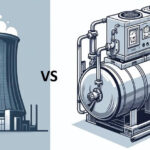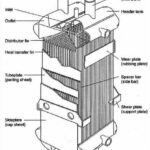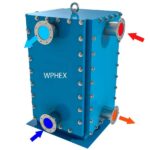Introduction
Pressure vs Stress!… In the world of engineering, two terms that are frequently used, and sometimes interchangeably, are stress and pressure. While these concepts are related and often occur simultaneously in various engineering applications, they have distinct definitions, units of measurement, and mathematical representations. In this article, we will delve into the fundamental differences between pressure vs stress in engineering terms, providing real-world examples and mathematical equations to illustrate pressure vs stress concepts.
Stress in Engineering
Stress is a fundamental concept in engineering that represents the internal resistance of a material to deformation when subjected to external forces. It is a measure of the internal distribution of forces within a material, typically described by the force per unit area. In engineering terms, stress is denoted by the Greek letter σ (sigma) and is measured in units of force per unit area, such as Pascals (Pa) or N/m².
Mathematical Representation of Stress:
\[σ\ =\ \frac{F}{A}\]
Where:
σ is the Stress in Pascals (Pa)
F is the applied force in Newtons (N)
A is the cross-sectional area in square meters (m²)
Illustrative Examples of Stress in Engineering
Tensile Stress in Bridges:
- Picture a massive suspension bridge like the Golden Gate Bridge. The weight of vehicles and strong winds exerts a pulling force on the bridge’s cables. This force creates tensile stress within the cables, as they resist elongation and ensure the bridge’s stability.
Compressive Stress in Skyscrapers:
- When constructing towering skyscrapers, engineers must consider the compressive stress experienced by the building’s columns and beams. These components endure enormous vertical loads, which push them together, creating compressive stress that must be managed to prevent structural failure.
Shear Stress in Metal Cutting:
- In manufacturing, shear stress is at play when cutting metal sheets. A shearing force applied parallel to the material’s surface initiates shear stress, allowing for precision cuts and shaping of materials.
Deciphering Pressure in Engineering
Pressure, on the other hand, is a measure of the force applied to a given area over a surface. It is a scalar quantity and represents the intensity of a force acting on a particular point or surface. In engineering, pressure is also measured in Pascals (Pa) or other pressure units, such as atmospheres (atm) or pounds per square inch (psi).
Mathematical Representation of Pressure:
\[P\ =\ \frac{F}{A}\]
Where
P is the pressure in Pascals (Pa)
F is the applied force in Newtons (N)
A is the area over which the force is applied in square meters (m²)
Illustrative Examples of Pressure in Engineering
Hydraulic Systems in Heavy Machinery:
- Hydraulic systems in heavy machinery, like bulldozers and cranes, rely on pressure to transmit force through confined fluids. When you operate the controls of a hydraulic excavator, you’re manipulating pressure to lift or move heavy objects.
Tire Pressure in Vehicles:
- Maintaining the correct tire pressure is vital for vehicle safety and performance. In this case, pressure represents the force exerted by the air inside a tire on its interior surface. Incorrect tire pressure can lead to accidents and decreased fuel efficiency.
Pressure in Dams:
- Dams are engineering marvels that harness the power of water. Pressure plays a crucial role here as well. Water exerts immense pressure on the dam’s structure due to its weight. Engineers must carefully calculate and manage this pressure to ensure the dam’s integrity.
Key Differences Between Pressure vs Stress
Now that we have established the definitions and mathematical representations of pressure vs stress in engineering, let’s highlight the pressure vs stress key differences:
Nature of Quantity
- Stress is a vector quantity, meaning it has both magnitude and direction. It represents the internal distribution of forces within a material.
- Pressure is a scalar quantity, as it only has magnitude and does not have a specific direction. It represents the intensity of force applied to a surface.
Units
- Stress is measured in Pascals (Pa) or N/m².
- Pressure is also measured in Pascals (Pa) or other pressure units like atmospheres (atm) or pounds per square inch (psi)
Application
- Stress is primarily used to analyze the behavior of materials under load and is associated with deformation and structural integrity.
- Pressure is commonly used to describe force distribution on surfaces and is often related to fluid mechanics and hydraulic systems.
Direction
- Stress has directionality and can be tensile, compressive, or shear, depending on the type of force applied.
- Pressure is isotropic and acts uniformly in all directions on a surface.
General view
In engineering, pressure vs stress are two distinct but closely related concepts. Stress represents the internal distribution of forces within a material and is associated with deformation and structural behavior. Pressure, on the other hand, represents the intensity of a force applied to a surface and is commonly encountered in fluid mechanics and hydraulic systems. Understanding these differences is essential for engineers to design and analyze structures and systems effectively, ensuring their safety and functionality. I hope reading this article has provided you with a clearer understanding of pressure vs stress.
keywords: pressure vs stress
External Links
Pressure Units Converter – Android mobile application











